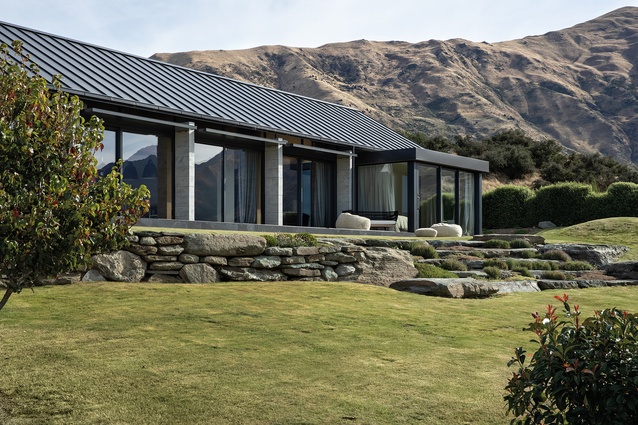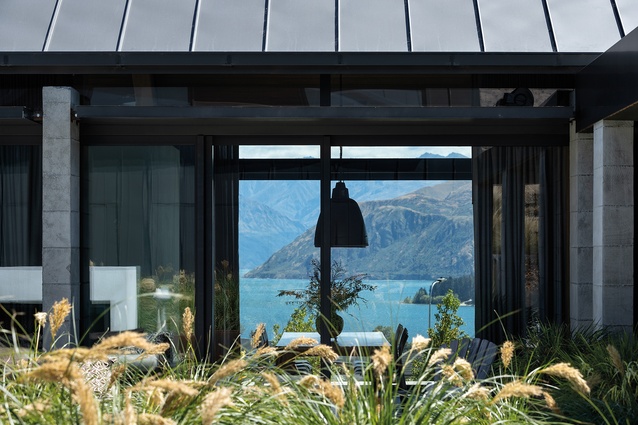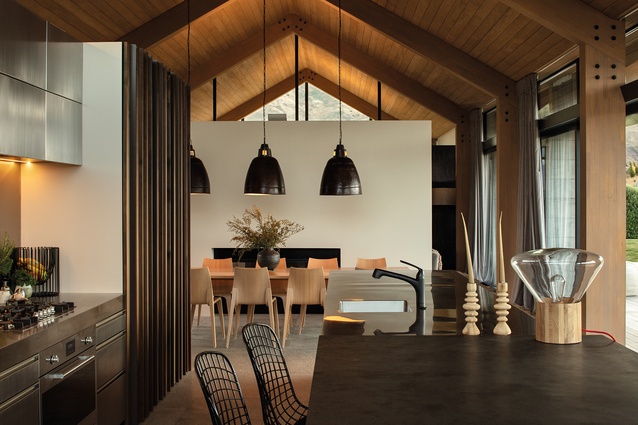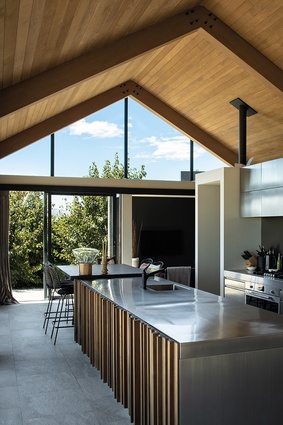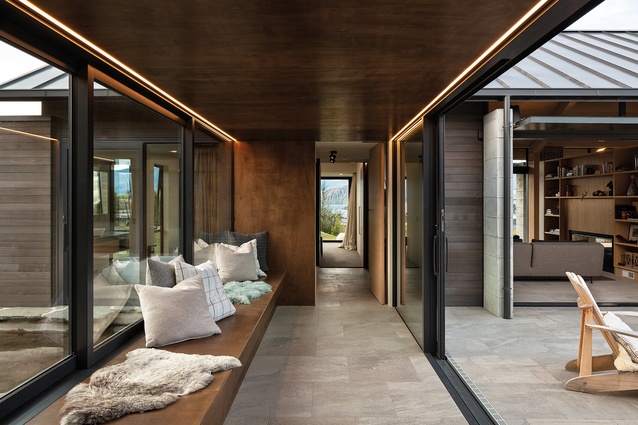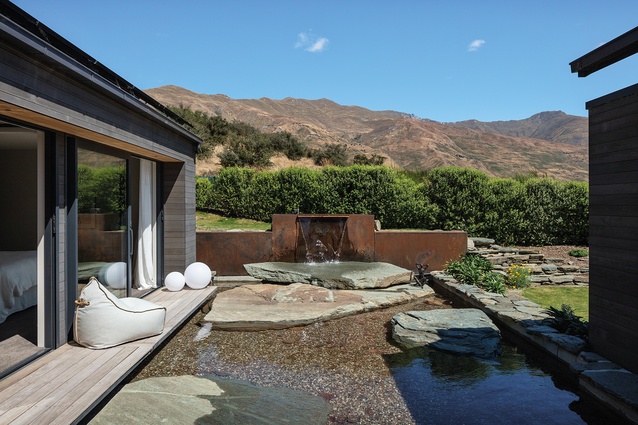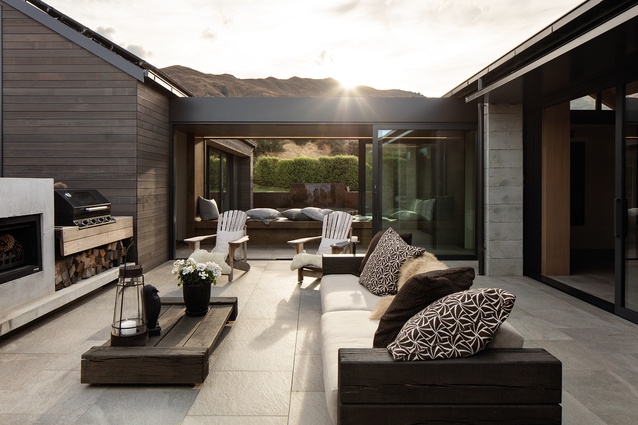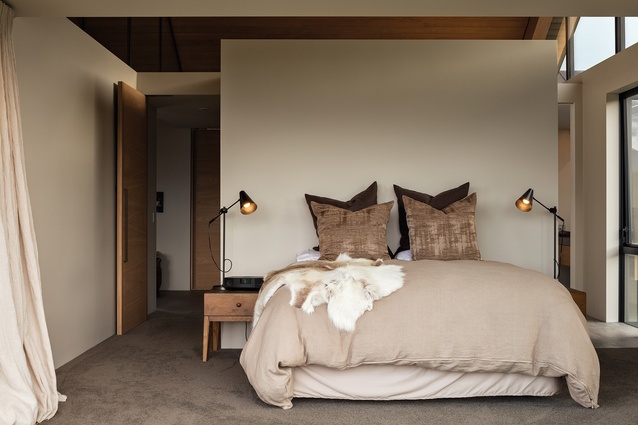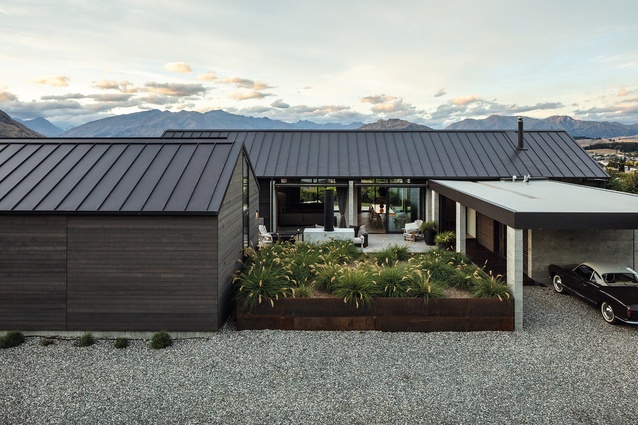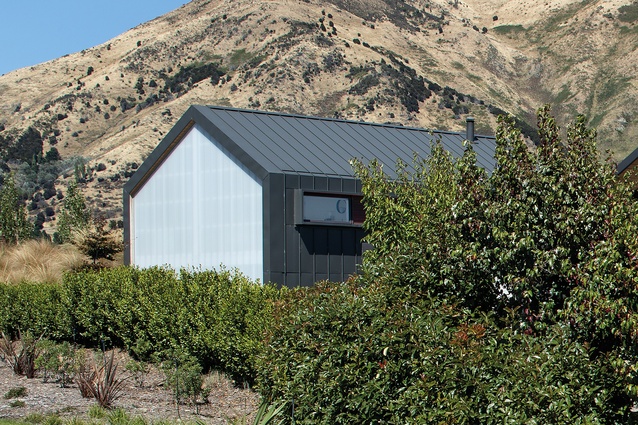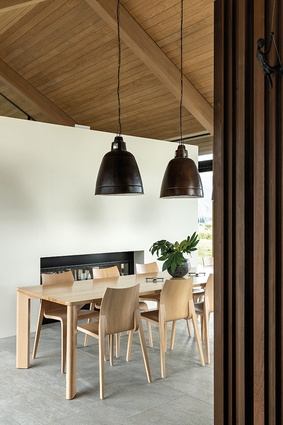Landing place: West Meadows house
With lakeside views and an alpine backdrop, this award-winning South Island house by Three Sixty Architecture is perfectly positioned to be a home for all seasons.
This Wanaka home expands and contracts when needed, making it a cosy refuge for the home-owner couple while also providing space for visitors.
Their lives have been predominantly based in Christchurch but architect Chris Prebble and designer Jenny Prebble always had a foot (or two) in Wanaka. Now, reaching retirement age and with their children grown and left the nest, it was time to put down some solid roots in the mountain town.
As a director at Three Sixty Architecture with more than 30 years’ architectural experience, Chris had a pleasant challenge in designing a home overlooking the lake for himself and his wife. They found an elevated site a few streets back from the lake, which benefited from a rural outlook to the rear and a lake view to the front. It was important that the home was not too large for the couple but that it could accommodate family and friends when required.
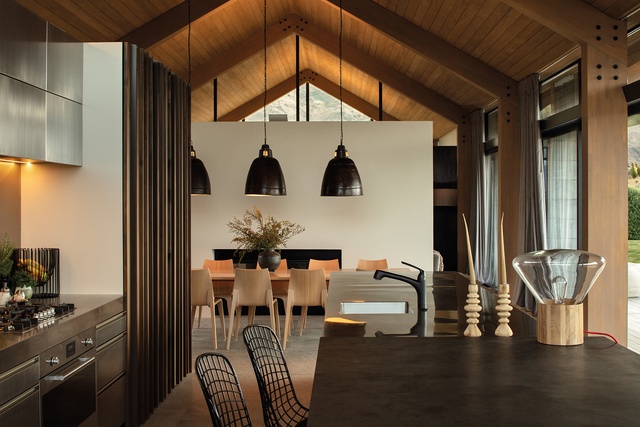
“This space here is fantastic when it’s just the two of us,” Chris says, referring to the living nook that adjoins the kitchen. “Jenny’s computer, two seats, a fire, a TV: that’s all you need.” The lakefront face defines their home when the couple is alone. From left to right, they have their nook, the kitchen, the dining room, the living room and then the master suite. The rest of the house – containing guest bedrooms and bathrooms – can be closed off, with no heating or hot water supplied when it isn’t needed.
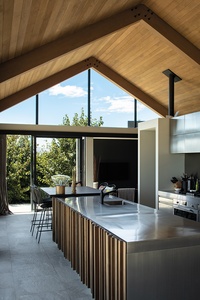
The kitchen is clad in vertical cedar panels, which mask the pantry and cupboards. This is juxtaposed against the stainless-steel benchtop and the grey tiled floor. The island expands into an informal dining table with a honed slate top. “That makes such a wonderful congregation spot,” says Jenny. “It’s bulletproof and easy to keep clean, and the black steel legs make it appear quite striking. People are drawn to here.”
The same cedar panels used in the kitchen also carry through to the entrance area, to the rear of the house. Along with the stone floor tiles, which are used everywhere from the bathrooms to the outdoor courtyard, and the light-stained pine ceiling, this creates a sense of consistency that is evident throughout the home.
A double-sided gas fireplace in a partial wall divides the dining table from the living space. With concrete coating on the dining side, this retains some solar gain thanks to the upper-level glazing that carries through the tops of the walls.
“The sun comes up in the morning and you get all this light that comes right over those walls,” says Chris. “The windows in the outside walls are triple glazed and there is underfloor water-to-air heating beneath the tiles but, mostly, we don’t need it because of the solar gain. We were in Christchurch for four days last week and came back and the house was sitting at 22 degrees with everything off.”
A pond provides some division between the guest and the master suites. This is a key feature of the home and has the appearance of the natural streams that run through Wanaka. Globe lights float in it and water flows from a Corten steel spout. “You can sit there in the summer and have a beer. Young kids will play in there for hours; it’s safe at only 400mm deep,” says Chris.
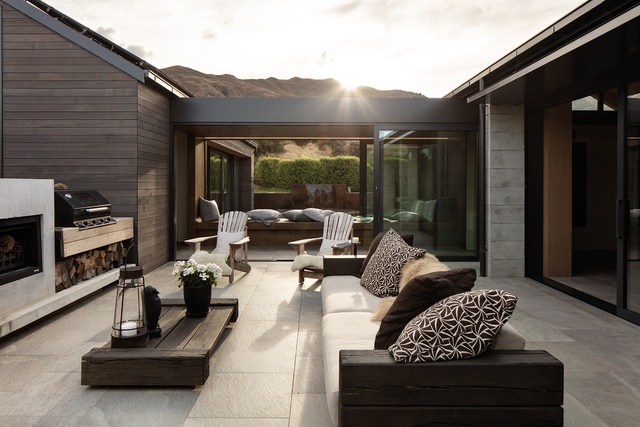
This area and the rear courtyard are entirely sheltered from the prevailing winds that come off the lake. The rear courtyard features an outdoor fireplace, making it a popular congregation spot year-round. Across the driveway, a two-storeyed ‘shed’ provides a workshop and more guest accommodation. This simple, Eurotray-clad form with red ‘eyebrows’ references the rural nature of the land behind the property.
Chris and Jenny might not be completely done with their lives in Christchurch, still ducking back every few weeks, but they are clearly at home in their house in Wanaka.
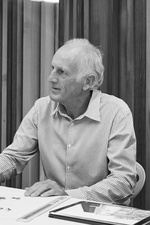
Material Palette
We talk to architect Chris Prebble about the textural interior cedar detailing and the eye-catching translucent cladding on the ‘shed’ exterior.
The vertical cedar panels in the kitchen and entry foyer are a work of art. How did they come about?
Chris Prebble (CP): Six different-sized cedar profiles were meticulously pieced together to give the wonderful vertical rhythm of this natural product. We expressed the end grain, where possible, to the tops of the cupboard doors and made sure we avoided protruding the benchtops over the tops of this vertical element. We then used a rich, dark interior stain to seal the cedar.
Tell us about the innovative cladding used on the exterior of the ‘shed’.
CP: Danpalon is an insulated, double-skinned, translucent polycarbonate product. It allowed us to achieve a soft, continuous flow of light from the eastern façade to both the garage below and the two bedrooms in the loft above, while still providing superior insulation and no change to the comfortable ambient temperature of the shed. The panels are in continuous lengths of up to 11 metres long; this allowed us to maintain a seamless approach to the exterior.

